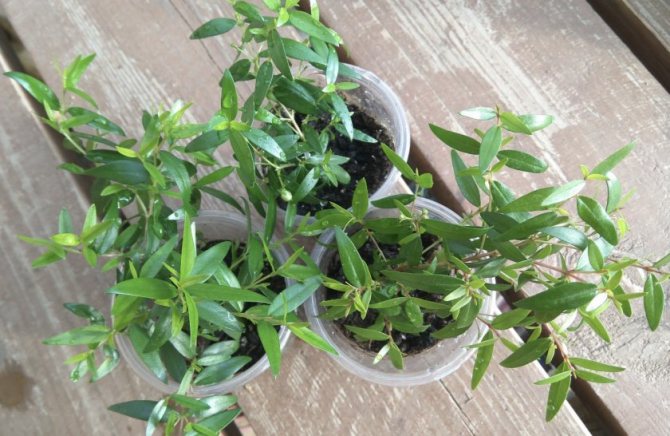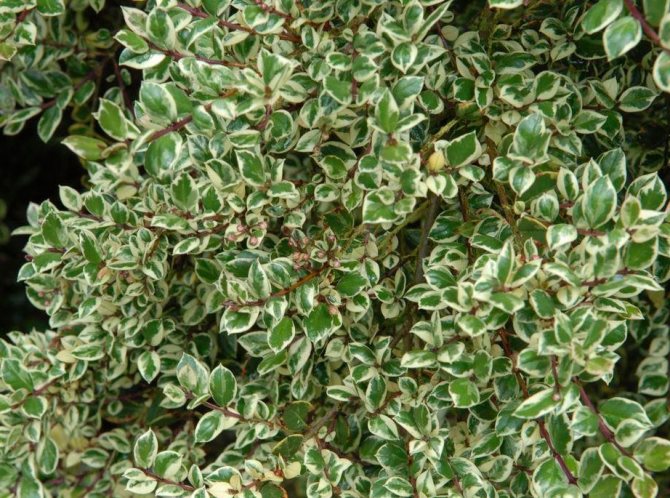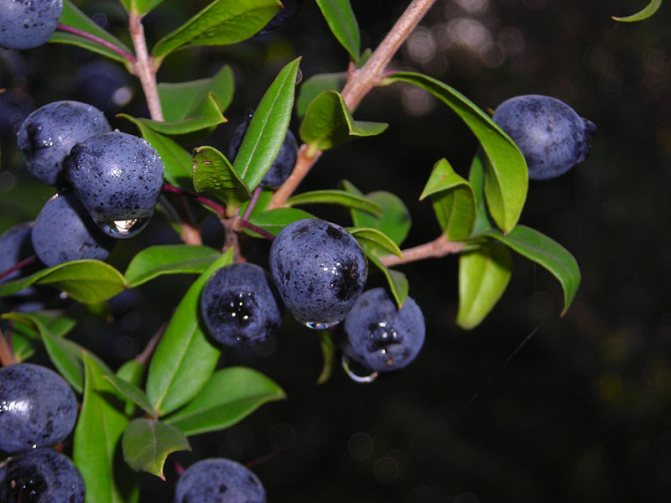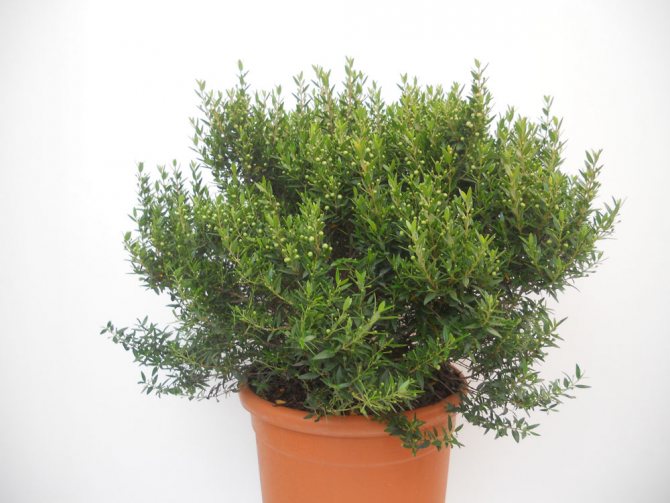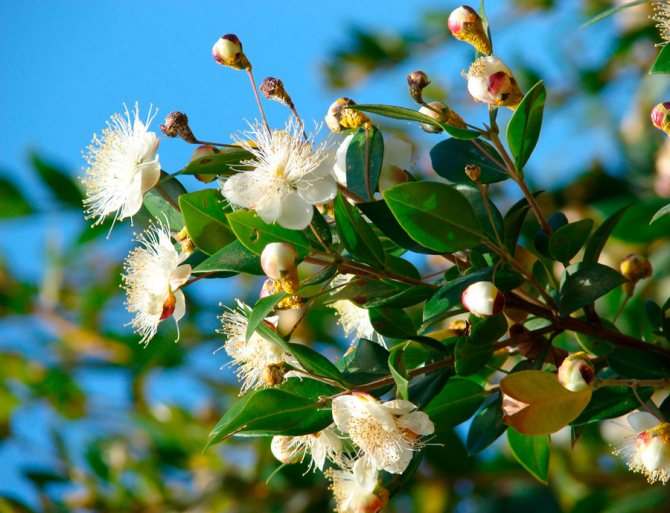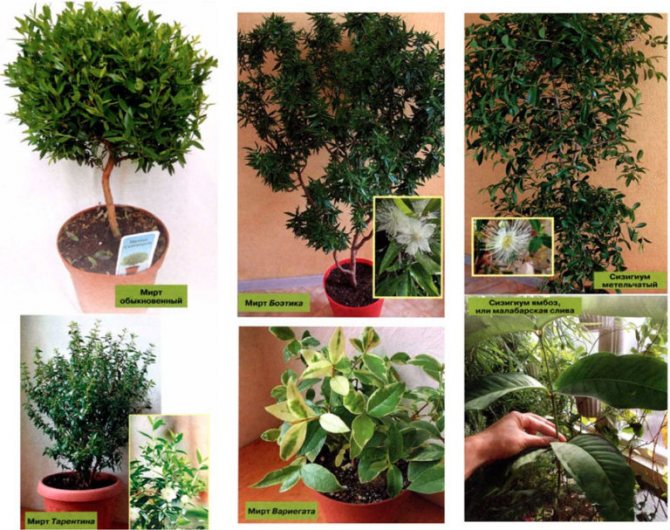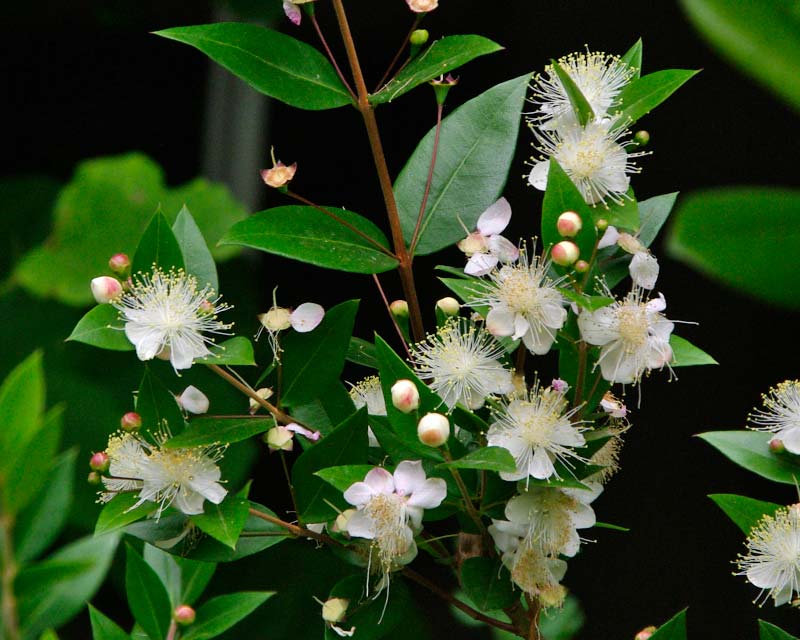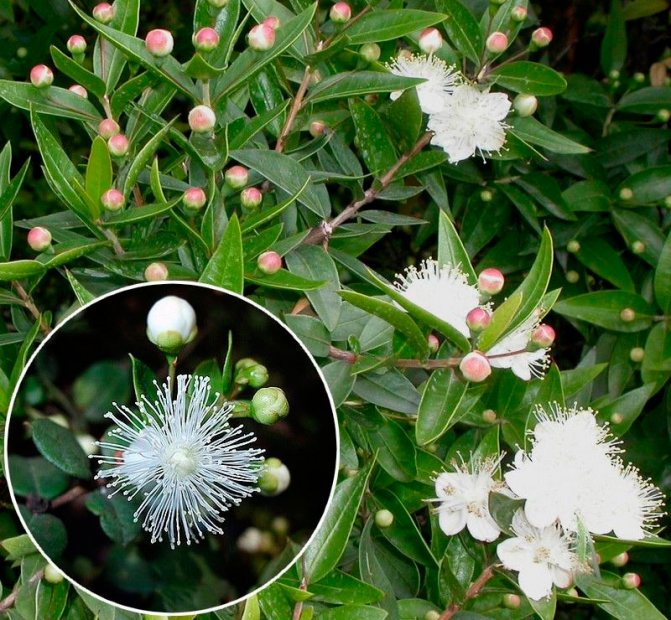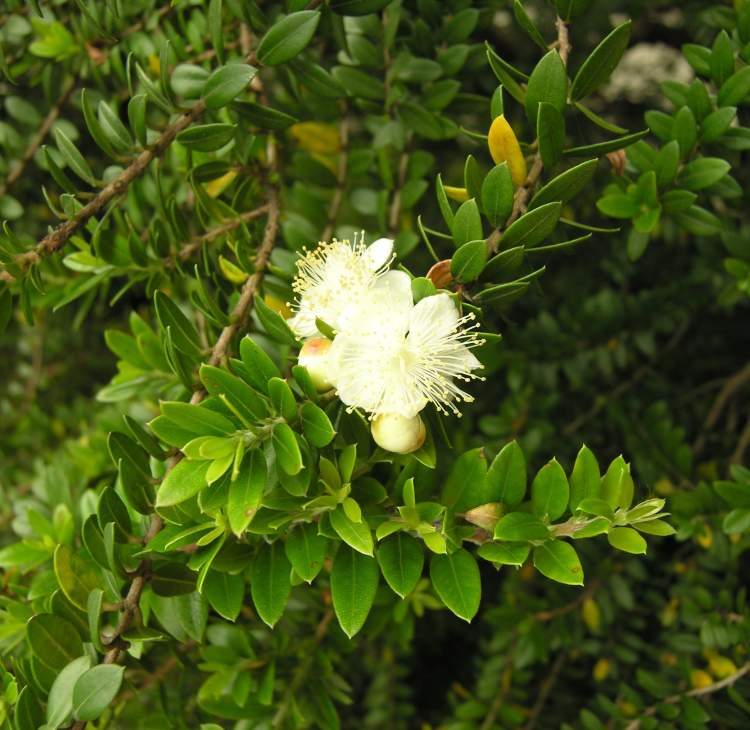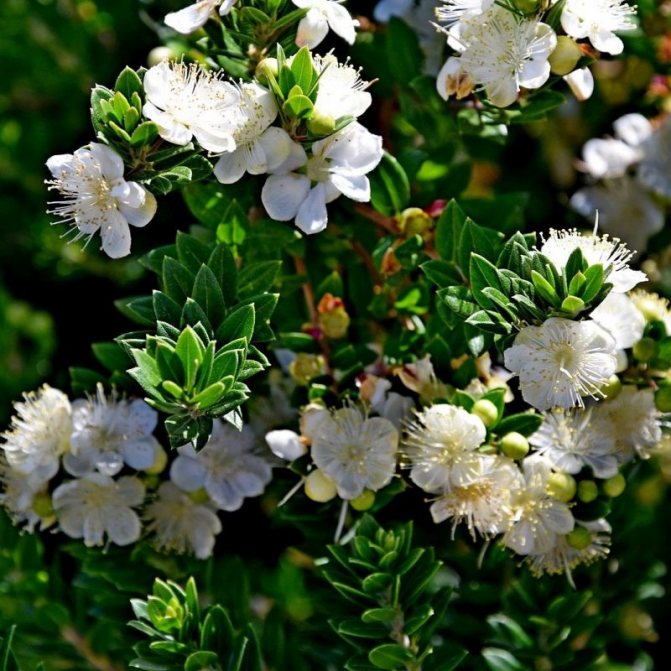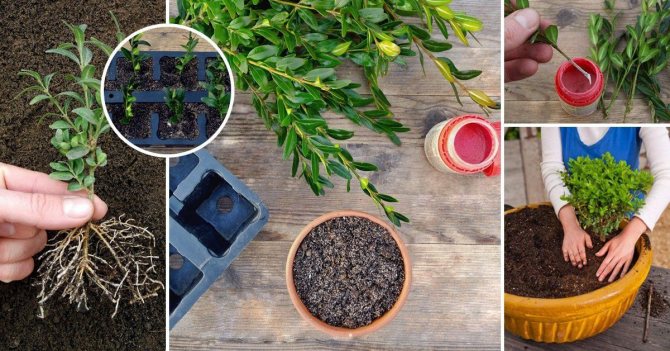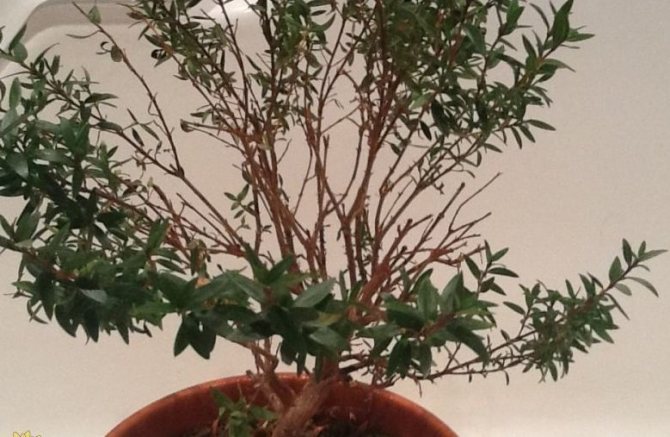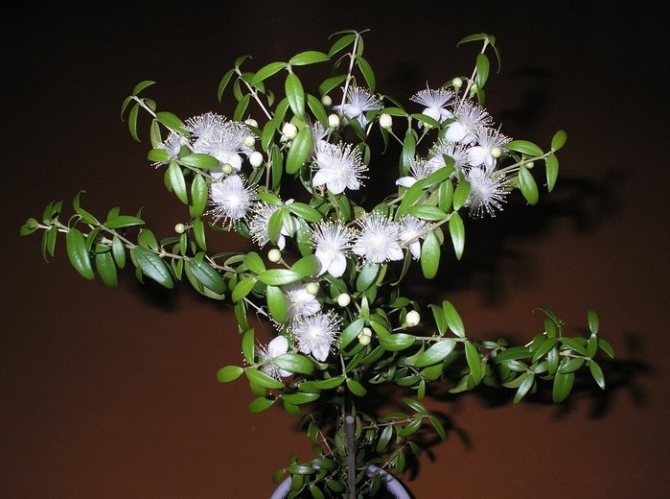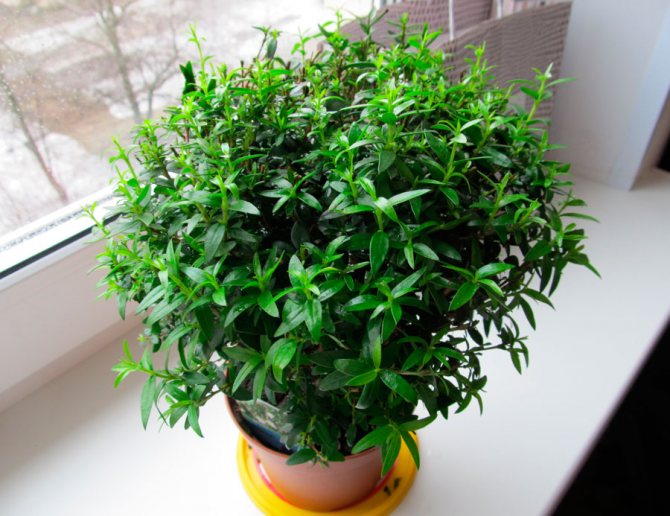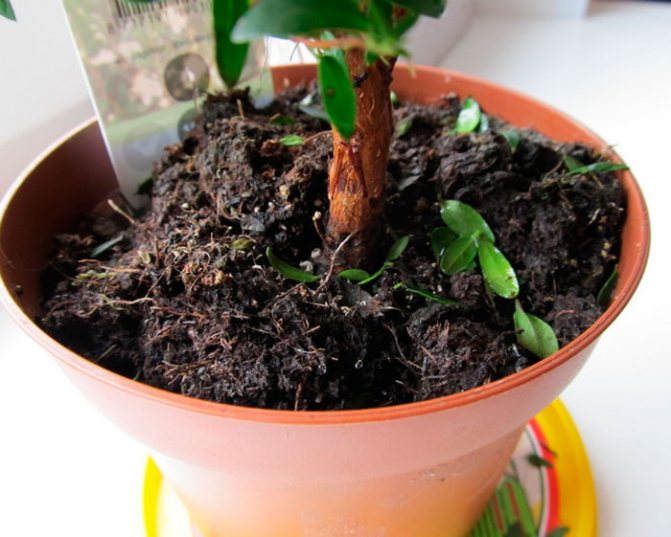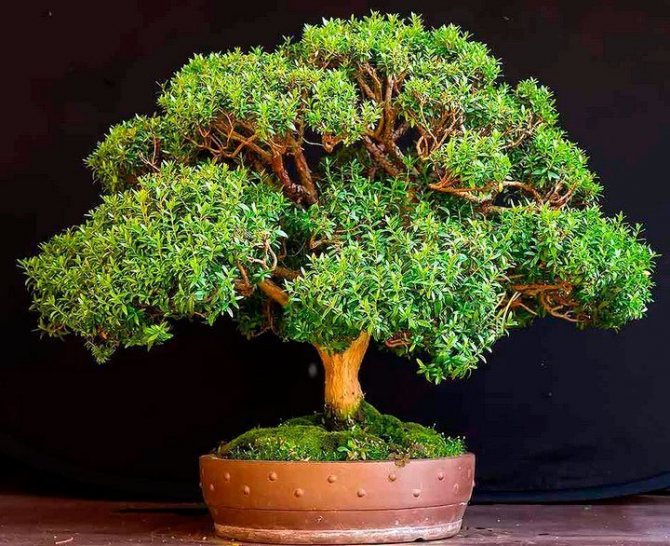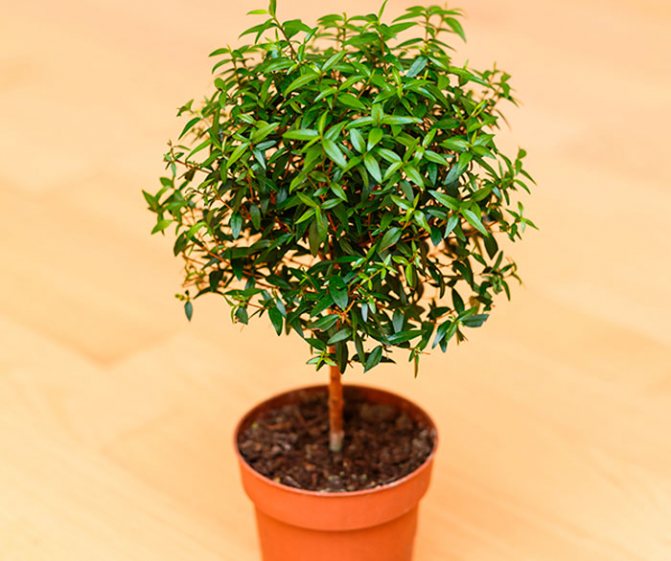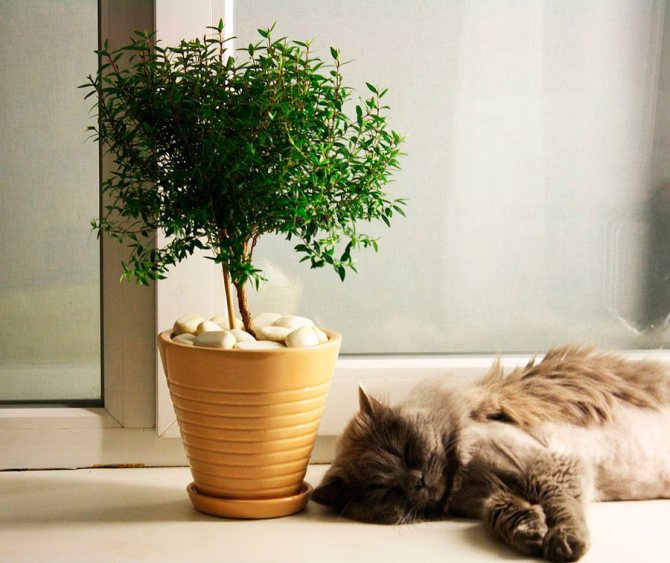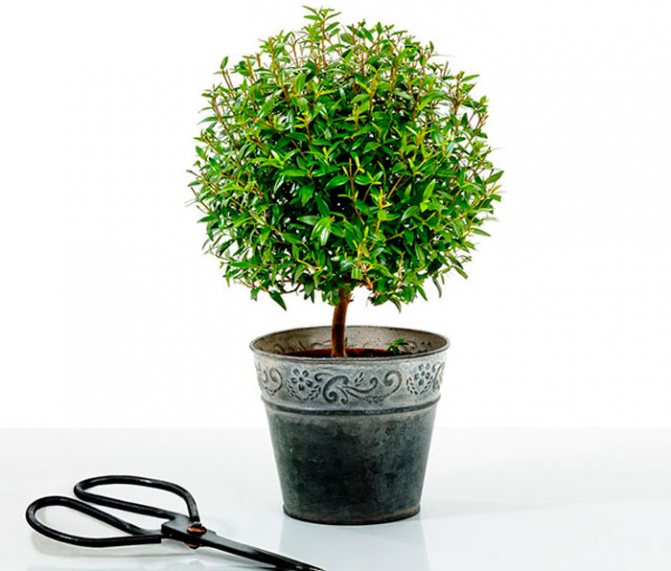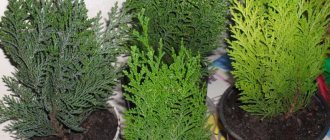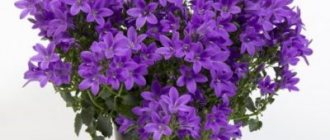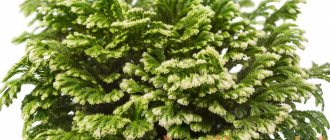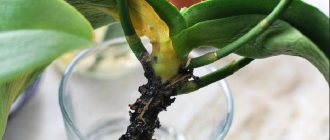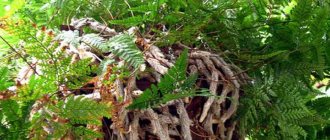The most attractive and vibrant indoor crops include the evergreen myrtle. Even a beginner can master home care, and in gratitude, the flower will give people a beautiful flowering and a wonderful aroma. Many myths, legends and rituals are associated with this flower. From the Greek language, myrtle is translated as "balm", it is considered a symbol that brings peace and good luck in love and marriage. Inflorescences cause aesthetic admiration, they are also used in the form of various means in the medical and cosmetic fields. Experienced growers love this plant, and are advised to purchase it for home growing.
Useful properties and harm of myrtle
Myrtus is a medicinal herb with medicinal benefits.
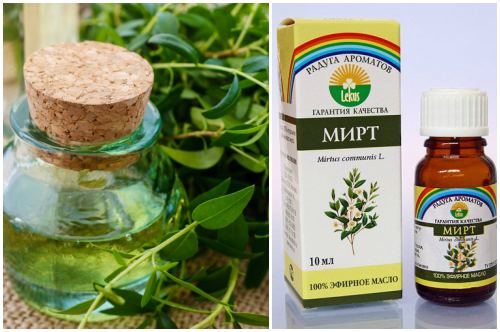
- The essential oils exuded by the leaves are natural phytoncides that disinfect the surrounding air.
- Astringent and bactericidal action helps relieve inflammation, heal wounds.
- Increases the tone of the body, improves immunity.
- Helps with skin diseases: dermatitis, psoriasis; cosmetology.
- Stimulates the nervous system.
In addition to useful properties, a flower can harm a person:
- Indoor myrtle is not recommended for use in the bedroom - its pine scent can cause insomnia and headaches.
- Medicines based on myrtle have a tonic effect, so they are not used before bedtime.
- The use of drugs in children and pregnant women is contraindicated.
Luma
Luma (Luma) is a multi-stemmed plant with an original peeling orange-brown bark with soapy properties. The leaves of this species are medium-sized, have a pleasant tart smell when rubbed. All summer blooms with fragrant white flowers. They are located singly or in 3-5 pieces. In autumn, it produces a dark purple fruit that looks like blueberries, has a sweetish taste, although rather dry. It is very rare in indoor culture, although the plant can be well formed in the bonsai style.
The most popular types and varieties of myrtle
The following types of myrtle are kept indoors. Photo below.
Common myrtle
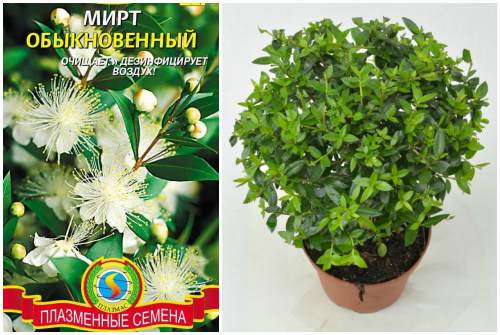

It has a short trunk covered with scaly, flaking bark. Brilliantly the leaves are located opposite each other. The flowers are white with long yellow stamens protruding beyond the corolla.
At home, both a botanical species and varieties of common myrtle are grown.
The following varieties are most often found.
Tarentina
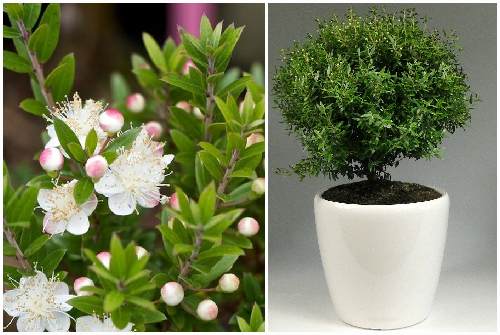

A low-growing variety, distinguished by its dwarf size and abundant flowering.
Variegata
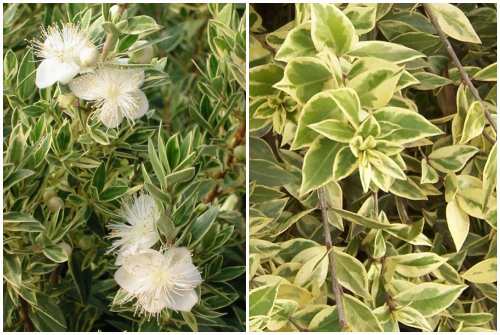

Differs in the color of the leaves, they are variegated, green-white.
Chilean myrtle (Luma apiculata)
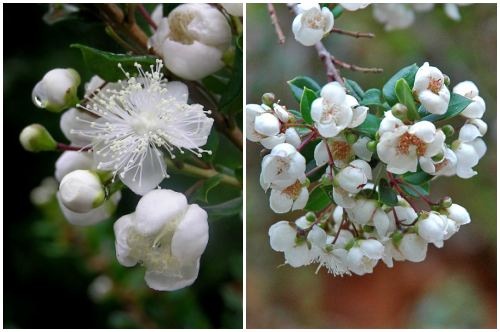

This species is represented by slowly growing trees reaching 10 - 20 meters in height. The trunks are twisted, with smooth bark. Chilean myrtle berries are edible and have medicinal properties, due to which they are used in medicine.
Dwarf forms are grown as houseplants.
Glanleam gold
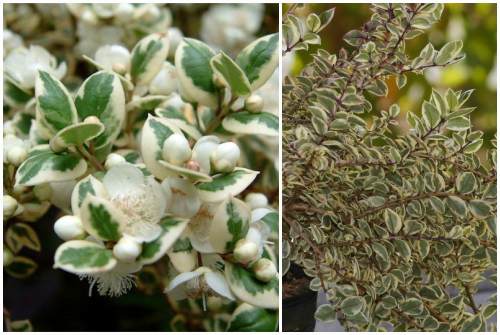

Variegated form of Chilean myrtle. Small in size.
Fine seed or leptoospermum
The paniculata leptospermum has small or golden foliage. Viri Joan is a popular variety. Its flowers are pink and have a small crimson ring in the center.The stem tree looks charming in spring, covered with a few flowers with 5 petals. Currently, this species is more often used in bouquets than grown at home, on window sills. Its branches have small pointed thin-toothed leaves, pink, white, lilac, crimson or salmon flowers with a ring of short stamens. Leptospermum is a tea tree, another one. An interesting fact is that the first settlers in Australia made aromatic tea from its leaves, which saved them from scurvy on long journeys.
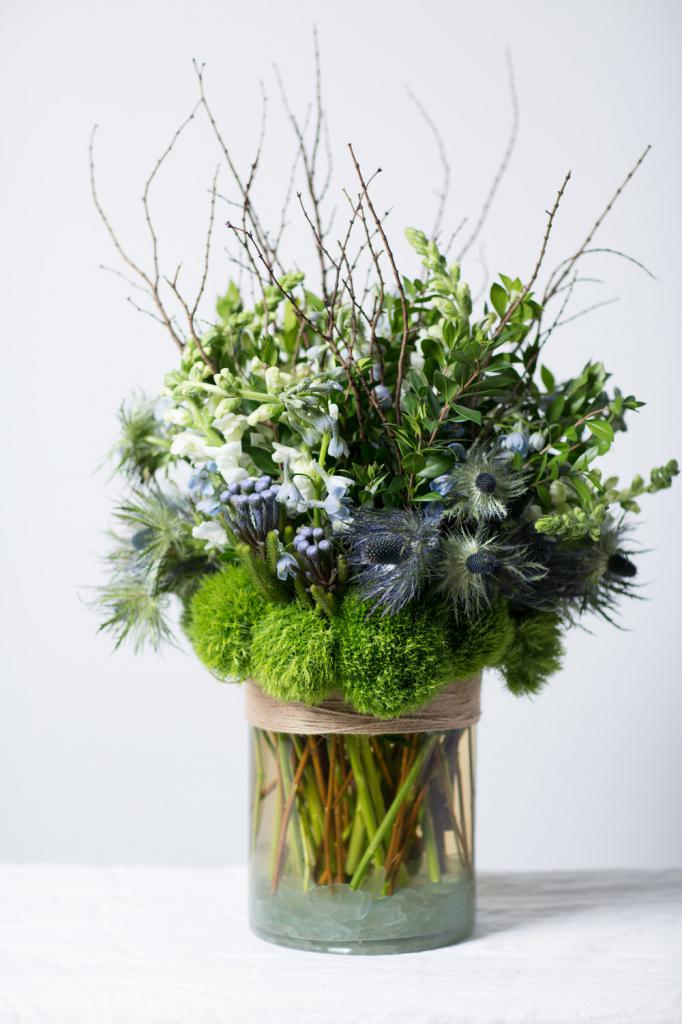

How to care for myrtle
The myrtle tree is rather finicky in its content. Therefore, for successful growth, he is provided with proper care at home.
The soil
The plant prefers soil with high acidity. The mixture is made up of the following components:
- sod land;
- compost soil or manure humus;
- peat;
- coarse sand.
All parts are taken in equal quantities.
This substrate is suitable for both adult plants and young seedlings.
Watering
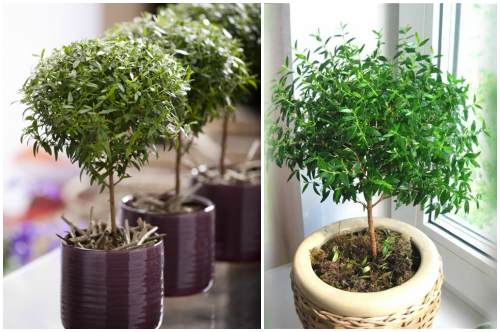

- Water the plantings in a timely manner - even a short-term drying out of the soil can provoke a drop of foliage. If this happens, do not worry too much - the tree will grow again.
- Adding a hydrogel to the soil will allow the soil to retain moisture better.
- It is useful to alternate watering with ordinary soft water, with water acidified with lemon juice. To prepare the solution, add 2 - 3 drops of lemon juice to 1 liter of water.
- The home bush responds gratefully to spraying and a cool shower.
Lighting, temperature control
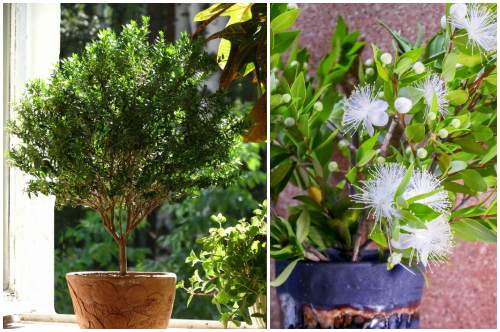

- The culture feels most comfortable in bright light, at moderate temperatures, about 18 - 23 C. The plant is covered from the scorching sun to prevent overheating. In the summer he is taken out into the open air.
- An ideal option for keeping a house tree is a warm loggia or a bright, unheated room.
- Sometimes, when Myrtus dries up, it is enough to take it out to a cooler room to make it feel better.
- In winter, he is provided with a temperature of about 10 - 12 C. Watering for this period is limited, but without the earthen coma drying out.
Metrosideros
The peculiarities of this species are flowers without a corolla, having bunches of long stamens that can be colored orange, red, yellow, salmon or pink. Among them are liana-like plants and shrubs.
The most available for sale is Thomas's metrosideros - a compact shrub whose flowers have orange or red stamens.
Carmine metrosideros is a beautiful ampelous plant that can grow on a support, clinging to it with adventitious roots. At the end of winter, red flowers appear.
There is also a variegated variety called "carousel".
Metrosideros sparkling - the liana is slightly more powerful than the previous one, the main feature is that it blooms at unusual times: from late summer to winter; orange or red flowers. More rare are yellow varieties.
Reproduction of indoor myrtle
Myrtles reproduce by cuttings and seeds.
Growing from seeds
The seeds must be fresh, their germination depends on it.
For sowing, a mixture of the following composition is suitable:
- Peat soil;
- sand (vermiculite).
- The components are taken in the same amount and mixed thoroughly. It turns out a loose air mixture, which is poured with a solution of a fungicide (Fitosporin) to prevent fungal infections.
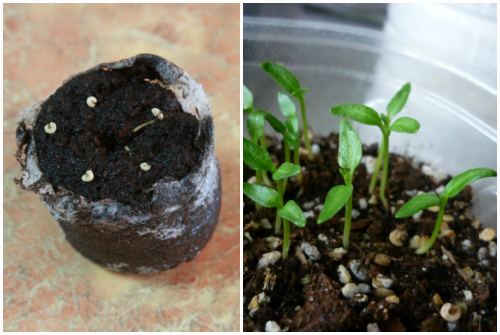

- Seeds are spread over the surface of the substrate, then lightly sprinkled with a layer of soil.
- Cover with a transparent lid.
- Crops are periodically ventilated, preventing the appearance of mold on the surface.
- The soil is kept moist.
- Seedlings appear in 1 - 2 weeks, at a temperature not lower than 20 C. Lower heating is desirable.
- After the appearance of real leaves, the seedlings must be transplanted into a nutritious soil. Since the substrate in which the seeds germinated is poor in nutrients.
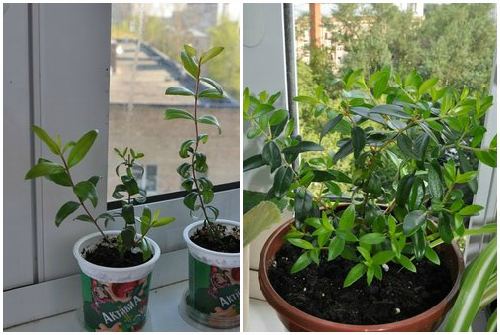

Transplanting is stressful for young plants - they temporarily stop growing. But after adaptation, they begin to grow again.
Propagation by cuttings
When grafting, a non-lignified twig with a "heel" is separated from an adult tree. For successful rooting, the cut must be treated with stimulants: Epin, Zircon. Without the use of such phytohormones, attempts are doomed to failure.
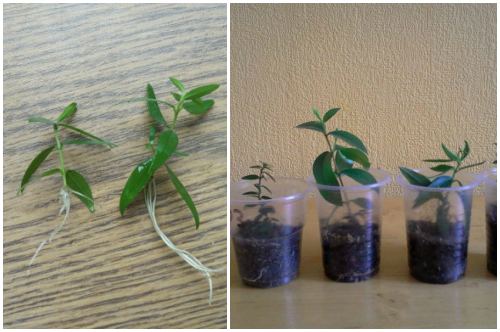

A good result is obtained by using sphagnum moss. By its nature, it is breathable, retains water well, and most importantly, it has bactericidal properties, does not allow the processes to rot.
Moss soaked with water is placed in a container and treated cuttings are planted. The top is closed with a cap, which is periodically removed - ventilated.
Description of the plant
The myrtle family is well known among flower growers. There are about 10 varieties of myrtle in total. The homeland of the plant is the Mediterranean. Grows in subtropical climates. In natural conditions, it is a shrub or tree up to 3 meters high. When grown in an apartment, it reaches 60 cm.
The leaves are small, shiny, leathery, oval, dark green. When rubbed in hand, they give off a pleasant spicy aroma. Most of the essential oils are concentrated in small veins. The flowers are small on long stalks, with five petals and many stamens. The color is white or pale pink. Fruits are round small berries of intense blue color.
Interesting information! Myrtle leaves contain phytoncides. They improve and disinfect the air in the apartment. Leaves and dried fruits are used as spices. The most famous myrtle spice is cloves.
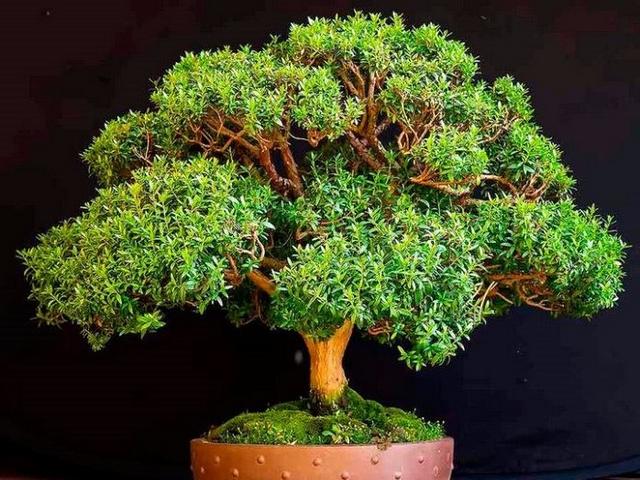

Why do myrtle leaves fall
Myrtus is very sensitive to environmental factors. Sometimes it happens that the myrtle tree throws off the foliage. This phenomenon can be influenced by some factors or a combination of them.
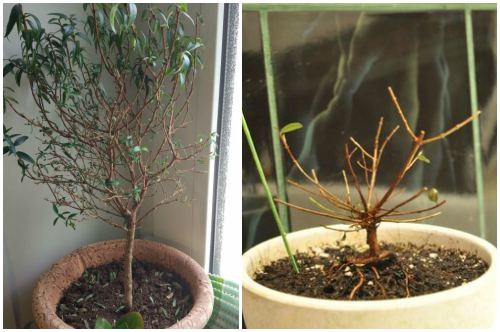

- Drying out of the earthen coma.
- We moved the pot to a new place.
- A new purchased plant stays in the same soil for a long time. It is advisable to transplant newly acquired trees into fresh soil, since there is a high probability that the old substrate is already depleted.
- Stress after not being neatly transplanted.
- High ambient temperature.
- Warm wintering.
However, it happens that the reset occurs for an inexplicable reason. But the bush will again become overgrown with leaves - Epin helps the tree turn green again.
Care errors
When growing myrtle, various problems arise, often associated with improper plant maintenance.
- Leaves turn black. Usually associated with over-watering. It is necessary to reduce watering and loosen the soil. You can replace the soil.
- Yellow leaves indicate a lack of moisture in the soil and air.
- Falling leaves can mean poor water quality or too hot a place, dry soil.
- If myrtle leaves fall off after a change of scenery, then this is an indicator of stress or insufficient watering.
- Myrtle leaves dry and curl. This indicates a violation of care, movement or insufficient watering. Sometimes myrtle sheds leaves in winter when the air is dry. Do not despair, in the spring the plant can put up new leaves.
- The leaves became sticky. This is a sign of scabbard damage. See the next section for treatment measures.
Crown formation
Without a haircut, the crown grows loose and sparse. And regular pruning makes indoor myrtle even more attractive. Dwarf forms make beautiful bonsai.
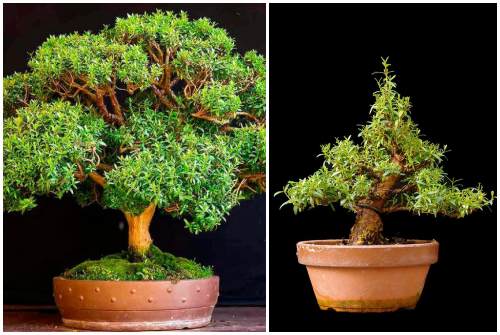

It must be borne in mind that the buds appear on young shoots. Therefore, in order for myrtus to bloom, you should not cut off the branches of the current year. The haircut is carried out at the end of flowering.
There are several ways to form a crown.
Stamper
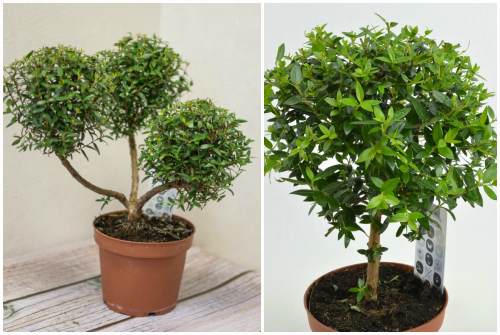

When the stem reaches the desired height, the lower branches are removed. The upper branches are neatly trimmed to achieve the desired shape.
Round
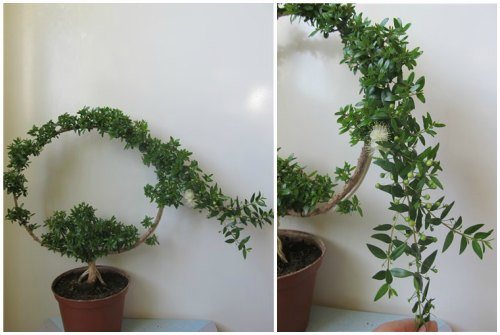

This option is convenient if the seedling has lost its crown for any reason, and it has 2 central branches. The branches are guided along a round support in different directions and secured with twine. Lateral branches are shortened, which promotes branching.
History of appearance
According to legend, myrtle grows in the Gardens of Eden. Adam managed to carry away the twig of the tree of paradise when he was expelled for sins, as a memory of life in paradise. The twig took root in the warm and humid climate of the Mediterranean, spreading around the world. Greek legends claim that the goddess Aphrodite wore a wreath of myrtle twigs. For delicate fragrant flowers, the plant has become a symbol of love and fidelity. Until now, in some countries, flowers or a sprig of myrtle are added to the bride's bouquet, personifying fidelity in marriage.
Under natural conditions, the flower grows in Mediterranean countries with a subtropical climate. It is an evergreen shrub or tree that grows up to two to three meters. In nature, there are many varieties growing in America, Australia, and Asian countries.
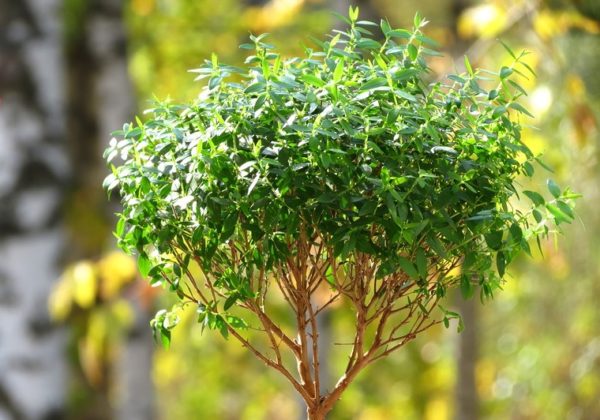

It is decorated with small bright green leaves located opposite each other on the branches. Small leaves on short cuttings are pointed towards the ends. Flowers of white, pink color grow in clusters in clusters or singly. There are types of myrtle with simple or double flowers, with a different number of petals. After flowering, fruits appear on the plant - drupe-like berries.
Diseases and pests of myrtle
- One of the most unpleasant pests is the scale insect. Due to the fact that the plant has many small leaves, it is problematic to get rid of it manually. An effective option would be cardinal pruning. Such an exercise will remove most of the scale insects and give access to difficult areas to process. Then the bush is treated with drugs.
- The spider mite betrays itself by yellowing and falling leaves.
- Alternative methods or acaricides are used against ticks.
An educational video will show you how to care for indoor myrtle.

